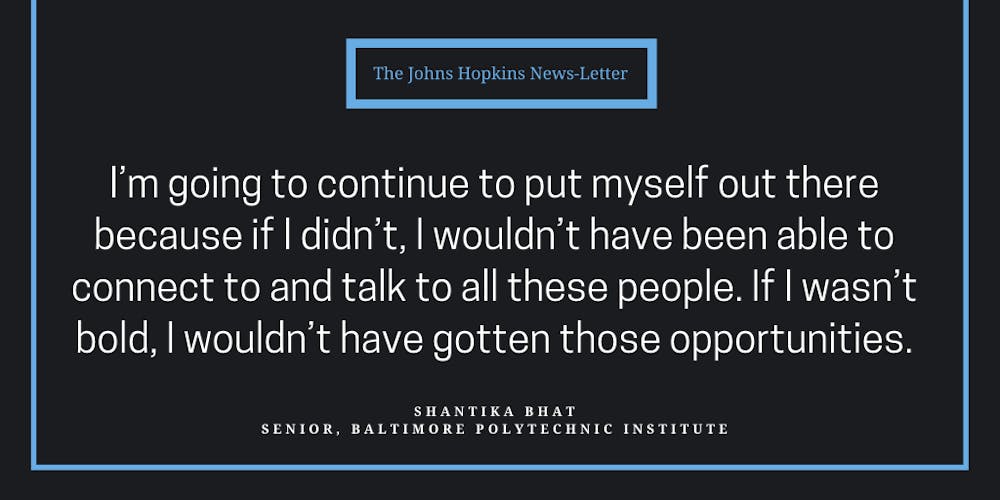The Baltimore BioCrew is a team of high school students who are tackling real-life problems in genetics and biology through research, lab work and creativity. Every year, the team competes in the high school division of the International Genetically Engineered Machine (iGEM) competition.
The projects emphasize synthetic biology concepts, with previous examples including arsenic biosensors for drinking water, pigmented bacteria and a detector kit for flavobacteria in fish farms. Last year there were nearly 250 competing teams from around the world, high school to graduate level. The BioCrew gold medaled for its work last year and received a special nomination for Best Integrated Human Practices.
This year, the BioCrew’s project focused on phytoplankton. Phytoplankton play a significant role in absorbing atmospheric carbon and producing oxygen. Unfortunately, they cannot grow in areas of the ocean with low iron concentrations. The BioCrew aimed to engineer cyanobacteria (blue-green algae) to transport iron into cells to help phytoplankton grow. Unfortunately, its wet lab work was hindered by the pandemic.
In a typical week during the school year, students spend three hours in the lab on Saturdays. During the summer, these hours increase to seven. These lab hours usually allow students to learn techniques, brainstorm, bond and do the experiments they need to complete their project.
Due to COVID-19 safety guidelines, the BioCrew members found ways to make the science portable so they could still get the data they needed. For example, some students took cyanobacteria samples to grow at home; this was safe because cyanobacteria is a biosafety level 1 organism. The students then tracked the growth of the cyanobacteria at different iron concentrations by measuring the cell density with homemade Secchi sticks.
There were also some aspects of the project that could be easily conducted over Zoom. For example, the integrated human practices team reached out to various experts and community members throughout the project to ask for feedback and advice. These interviews were conducted virtually. The BioCrew conducted classes for middle schoolers along with a social media education campaign to teach the public about the project.
Wangui Mbuguiro has mentored the Baltimore BioCrew team for three years. She is a Biomedical Engineering PhD student at Hopkins. In an email to The News-Letter, she explained how the changes brought on by the pandemic shed light on new ways for the BioCrew to move forward and do science.
“Synthetic Biology and iGEM is about making science and technology accessible in different spaces. Designing safe and feasible experiments that can be done at home to gain new insight is really pushing toward that accessibility,” she wrote. “I think optimizing at-home experiments will be an even larger portion of our project this year, regardless of our increased access to lab.”
The old-school homemade technology like the Secchi sticks was also a nice reminder that science wasn’t always done with the technology we have today, according to Mbuguiro. There’s a long legacy of other technologies and methods that the team can lean on when having to adapt to at-home experiments and not having access to the lab’s resources.
Shantika Bhat is a senior at Baltimore Polytechnic Institute, and this is her second year on the team. In an interview with The News-Letter, she said her favorite thing about being part of the BioCrew team is getting the opportunity to work with different students in Virginia and Maryland.
Bhat works in integrated human practices, which means she often contacts and communicates with experts and community members for the team.
According to Bhat, while the pandemic did limit the projects and experiments that the team members could do, it also led them to learn other skills like website development and social media to educate the public.
The main takeaway Bhat gained from her time on the integrated human practices team is the confidence to reach out and learn from experts.
“I’m going to continue to put myself out there because if I didn’t, I wouldn’t have been able to connect to and talk to all these people,” she said. “If I wasn’t bold, I wouldn’t have gotten those opportunities.”
For Mbuguiro, her favorite part of the experience has been collaborating with her peers and mentees.
“Working with the students in the BioCrew and the other mentors always manages to re-spark my excitement, curiosity and creativity in doing science,” she wrote.





